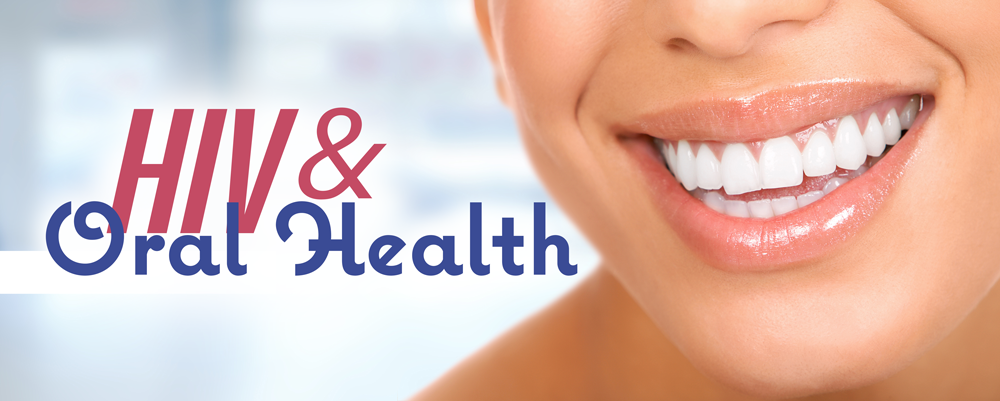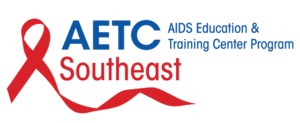Article: Xerostomia in Patients Living with HIV

By:
- Mark Schweizer, DDS MPH
Director of Development and Special Projects
Dental Director Southeastern AIDS Training and Education Center
Nova Southeastern University College of Dental Medicine
[email protected] - George Kolos, DMD
Assistant Professor | Nova Southeastern College of Dental Medicine
In the United
Florida statistics are more alarming, being ranked 1st among the 50 states in the number of HIV diagnosis in 2015. 2 This year the number of reported HIV cases in Florida has jumped 23 percent, the biggest increase in a continuing upward trend that began in 2012 after several years of decrease. The proportion of Floridians infected with the disease is at its highest in seven years 3. Increases in new infections are present in almost all counties of the state. A review of all counties in Florida shows that the highest new infection rates are in Miami-Dade County with 47%, followed by Broward 41.5%, Orange 35.5%, and Hillsborough 30%. 4
For the dental profession, the state statistics are of particular importance. In the absence of Antiretroviral Therapy (ART), oral manifestations are the earliest significant indicators of HIV infection.5. Oral lesions are common (30–80%) in patients infected by the HIV virus and may indicate an impairment in the patient’s general health status.6
With new advances in ART, clinical and epidemiological observations have shown a considerable decline in the morbidity of HIV-positive patients. There has been a significant shift in both the type and frequency of oral lesions present in patients living with HIV/AIDS (PLWHA). Patients on ART show a lower incidence of oral lesions including candidiasis, oral hairy leukoplakia, and Kaposi’s sarcoma. 7 The prevalence of oral lesions has decreased by more than 30% since advancements in ART. 8.
However, there has been an increase in
Symptoms of xerostomia include cracked peeled atrophic lips, glossitis (Figure 1), and pale dry buccal mucosa (Figure 2). Xerostomia can lead to dysphagia, dysgeusia, oral pain of unknown origin, dental caries, oral infections, periodontal disease, angular cheilitis associated with candidiasis (Figure 3) and can affect the health-related quality of life. These features of xerostomia can lead to the inability of the patient to take necessary
There are multiple causes of xerostomia from various mechanisms. For example, anticholinergic effects of many medications, alcohol and drug abuse, and damaging head and neck radiation can cause xerostomia. There are many comorbidities from HIV/AIDS such as cardiac disease, diabetes, and mental health disorders which occurs in PLWHA. As a result, many of the medications especially the antidepressants, anxiolytics, diuretics, and antihistamines being taken for these comorbidities lead to xerostomia.
There are still differing studies of the xerostomic effects of antiretroviral medications used to treat HIV. Antiretroviral drugs are now recommended for all patients with an HIV diagnosis regardless of their immune system status as ART enables the immune system and works to decrease the possibility of HIV transmission from one person to another.
There are currently six classes of drugs used to treat HIV infection which include nucleoside reverse transcriptase inhibitors (NRTIs), non-nucleoside reverse transcriptase inhibitors (NNRTIs), protease inhibitors (PIs), integrase inhibitors (INSTIs), fusion inhibitors (FIs), and chemokine receptor antagonists (CCR5 antagonists). In most cases, combination therapy includes three drugs to reduce HIV viremia to below detectable levels. A review of
More significant in the era of ART is the increase in
Inflammatory or infectious diseases are the second most common group of salivary gland disorders in HIV disease, followed by neoplastic lesions. Kaposi’s sarcoma can account for 10% of malignant salivary gland neoplasms in HIV disease. 16
Treatment of salivary gland enlargement in HIV remains
Reports of xerostomia, in HIV +
The goal for the patient is to alleviate the symptoms by increasing the intake of water, sugar-free gum or candies, salivary substitutes, or therapeutic management with cholinergic agents. Overlying these treatments must be
Mark Schweizer, DDS MPH is an Assistant Professor and Director of Development and Special Projects, and Program Director for Ryan White HIV Programs at Nova Southeastern University College of Dental Medicine. Dr. Schweizer is also Dental Director for the Southeast AIDS Education and Training Center.
George Kolos, DMD is an Assistant Professor at Nova Southeastern College of Dental Medicine. Dr. Kolos is a Florida Dental Association Trustee and a member of the International College of Dentists.

Figure 1

Figure 2

Figure 3
References:
- https://www.cdc.gov/hiv/statistics/overview/ataglance.html.
- https://www.cdc.gov/nchhstp/stateprofiles/pdf/florida_profile.pdf.
- http://www.sun-sentinel.com/local/broward/fl-hiv-cases-increase-20150724-story.html.
- http://www.flhealthcharts.com/charts/OtherIndicators/NonVitalHIVAIDSViewer.aspx?cid=0471.
- Greenspan D, Komaroff E, Redford M, Phelan JA, Navazesh M, Alves ME, et al. Oral mucosal lesions and HIV viral load in the Women’s Interagency HIV Study (WIHS) J Acquir Immune Defic Syndr. 2000; 25:44–50.
- Nokta M. Oral manifestations associated with HIV infection. Curr HIV/AIDS Rep. 2008; 5:5–12.
- Porter SR, Scully C. HIV topic update: protease inhibitor therapy and oral health care. Oral Dis. 1998; 4:159–63.
- Ceballos-Salobrena A, Gaitan-Cepada LA, Ceballos-Carcia L, Lezema-Del Valle D. Oral lesions in HIV/AIDS patients undergoing highly active antiretroviral treatment including protease inhibitors: a new face of oral AIDS Patients Care STDS. 2000; 14:627–35.
- Ivana Maria
Saes Busato DDS, PhD, Mariana Thomaz DDS, MSc, Alexandre Assam Toda Disdain Gustavo Polite Alanis DDS, MSc, Beatriz Helena Stile Franke DDS, PhD, AntonioAdison Soares de Lima DDS, PhD, Luciana Reis Azevedo-Alanis DDS, PhD Prevalence and impact of xerostomia on the quality of life of people living with HIV/AIDS from Brazil First published: 5 November 2012. - https://www.cdc.gov/mmwr/preview/mmwrhtml/rr5514a1.htm.
Cherian I ; A JefthaII Xerostomia and salivary flow rates in HIV patients, S. Afr. dent. j. vol.72 n.2 Johannesburg Mar. 2017.- Navazesh M, Mulligan R, Barrón Y, et al. A 4-year longitudinal evaluation of xerostomia and salivary gland hypofunction in the Women’s Interagency HIV Study participants. Oral Surg Oral Med Oral Pathol Oral Radiol Endod. 2003 June 30; 95(6): 693-8.
- Nittayananta W, Talungchit S, Jaruratanasirikul S, et al. Effects of long-term use of HAART on
oral health status of HIV-infected subjects. J Oral Pathol Med. 2010 May; 39(5): 397-406. - http://www.hivdent.org/_oralmanifestations_/PDF/hcdent2005.pdf.
- Mandel L, Kim D, Buy C. Parotid gland swelling in HIV diffuse infiltrative CD8 lymphocytosis syndrome. Oral Surg Oral Med Oral Pathol Oral Radiol Endod. 1998; 85:565–8.
- Ching DC, Argo Sino R, McKenna BJ, Camarilla JF, Cohen JM.
Utility of fine-needle aspiration in the diagnosis of salivary gland lesions in patients infected with human immunodeficiency virus. Dagan Cytopathic. 1999; 21:260–4. - Panayiotakopoulos GD, Aaronic K, Kyriakos D, Pianos S, Bourikas N, Vlachos A, et al. Paucity of Sjogren-like syndrome in a cohort of HIV-1-positive patients in the HAART era. Part II. Rheumatology (Oxford) 2003; 42:1164–7.
